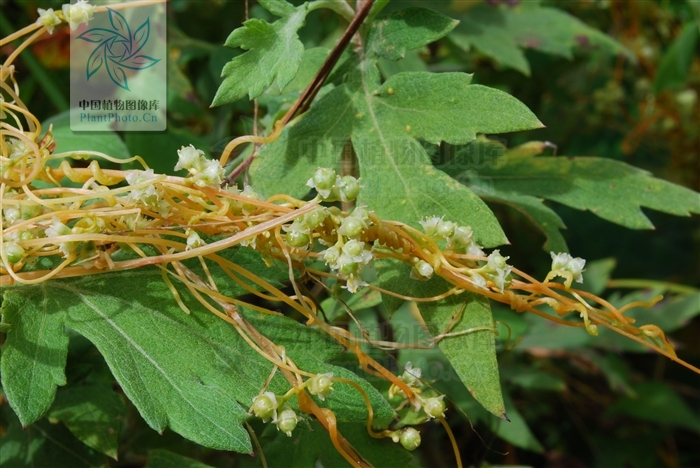 Description
Description
Cuscuta australis, commonly known as Australian dodder, is an herb in the family Convolvulaceae. The annual parasitic twining herb or climber that is associated with many hosts. It blooms between November and March producing 5-merous white-cream-yellow flowers in compact clusters on pedicels which are less than 2.5 millimetres (0.1 in) long. The lobes are rounded-triangular and shorter than or equal in length to the corolla tube. The seeds are medicinal and have the functions of nourishing liver and kidney, replenishing essence and strengthening yang and stopping diarrhea.
 Scientific classitication
Scientific classitication
Family: Convolvulaceae
Genus: Cuscuta
Common NameAustralian dodder, Nan Fang Tu Si Zi
- SUMMARY
-
Published journals
Nature Communications
-
Publish date
2018.07
-
Sequence Method
PacBio, Illumina HiSeq
-
Assembly
Cau_v1.0
-
Assembly Method
Canu v. Oct-2016
-
Genome Size
262.63 Mb
-
Genome Coverage
97.6x
-
Scaffolds
103
-
Contigs
218
-
N50
3625894
-
GC%
36.4
-
Bioproject
PRJNA394036
-
GCA Number
GCA_003260385.1
-
Data
https://ftp.ncbi.nlm.nih.gov/genomes/all/GCA/003/260/385/GCA_003260385.1_Cau_v1.0/
-
Reference url
 Reference
Reference
Sun G, Xu Y, Liu H, et al.Sun, G., Xu, Y., Liu, H., Sun, T., Zhang, J., Hettenhausen, C., ... & Wang, L. (2018). Large-scale gene losses underlie the genome evolution of parasitic plant Cuscuta australis. Nature communications, 9(1), 1-8.